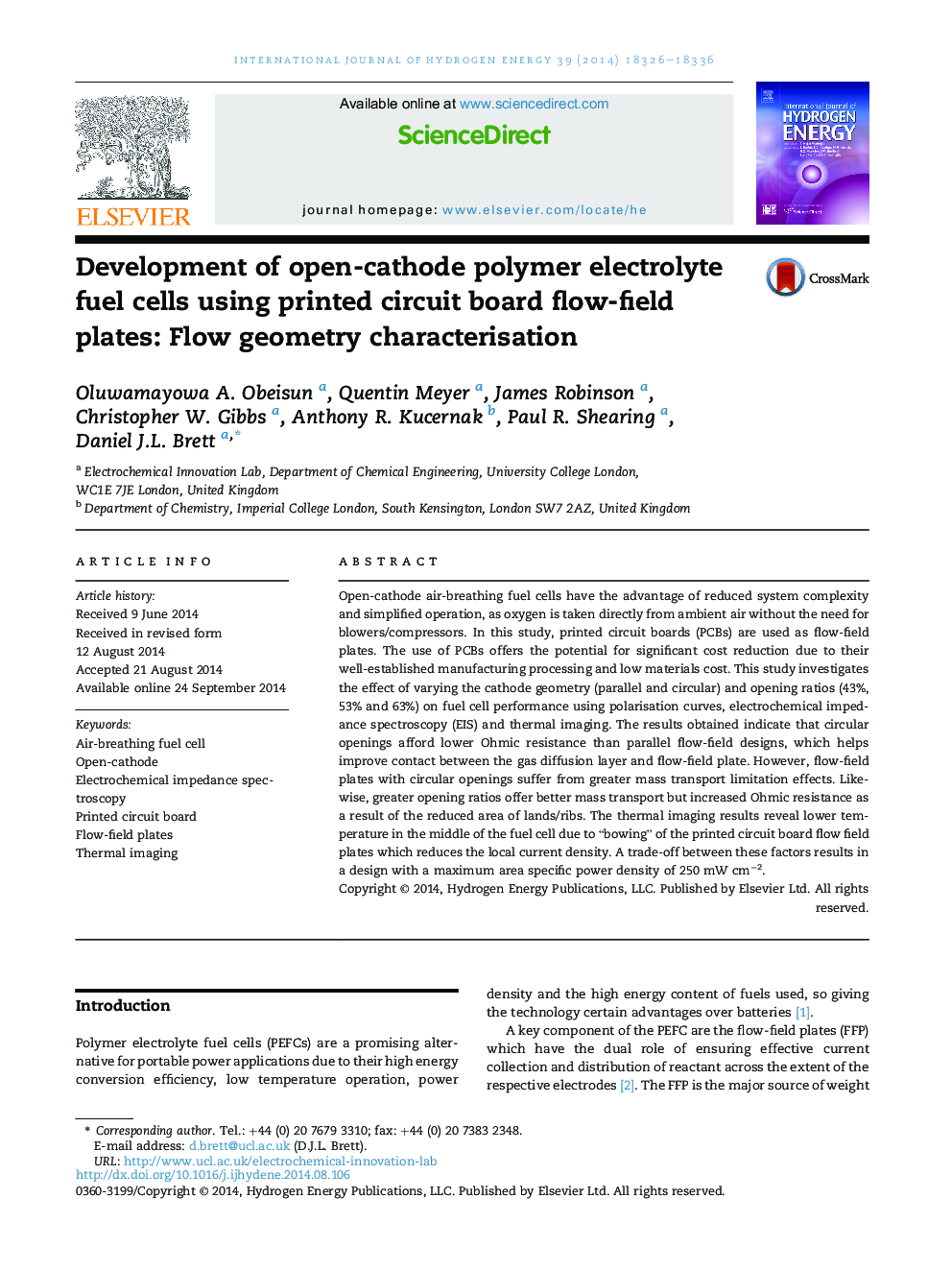| Article ID | Journal | Published Year | Pages | File Type |
|---|---|---|---|---|
| 1280842 | International Journal of Hydrogen Energy | 2014 | 11 Pages |
•Cathode geometry influence on air breathing fuel cell.•Electrochemical impedance spectroscopy used to characterise losses.•Cells with different geometry and opening ratios are characterised using infrared thermography.
Open-cathode air-breathing fuel cells have the advantage of reduced system complexity and simplified operation, as oxygen is taken directly from ambient air without the need for blowers/compressors. In this study, printed circuit boards (PCBs) are used as flow-field plates. The use of PCBs offers the potential for significant cost reduction due to their well-established manufacturing processing and low materials cost. This study investigates the effect of varying the cathode geometry (parallel and circular) and opening ratios (43%, 53% and 63%) on fuel cell performance using polarisation curves, electrochemical impedance spectroscopy (EIS) and thermal imaging. The results obtained indicate that circular openings afford lower Ohmic resistance than parallel flow-field designs, which helps improve contact between the gas diffusion layer and flow-field plate. However, flow-field plates with circular openings suffer from greater mass transport limitation effects. Likewise, greater opening ratios offer better mass transport but increased Ohmic resistance as a result of the reduced area of lands/ribs. The thermal imaging results reveal lower temperature in the middle of the fuel cell due to “bowing” of the printed circuit board flow field plates which reduces the local current density. A trade-off between these factors results in a design with a maximum area specific power density of 250 mW cm−2.
Graphical abstractFigure optionsDownload full-size imageDownload as PowerPoint slide
